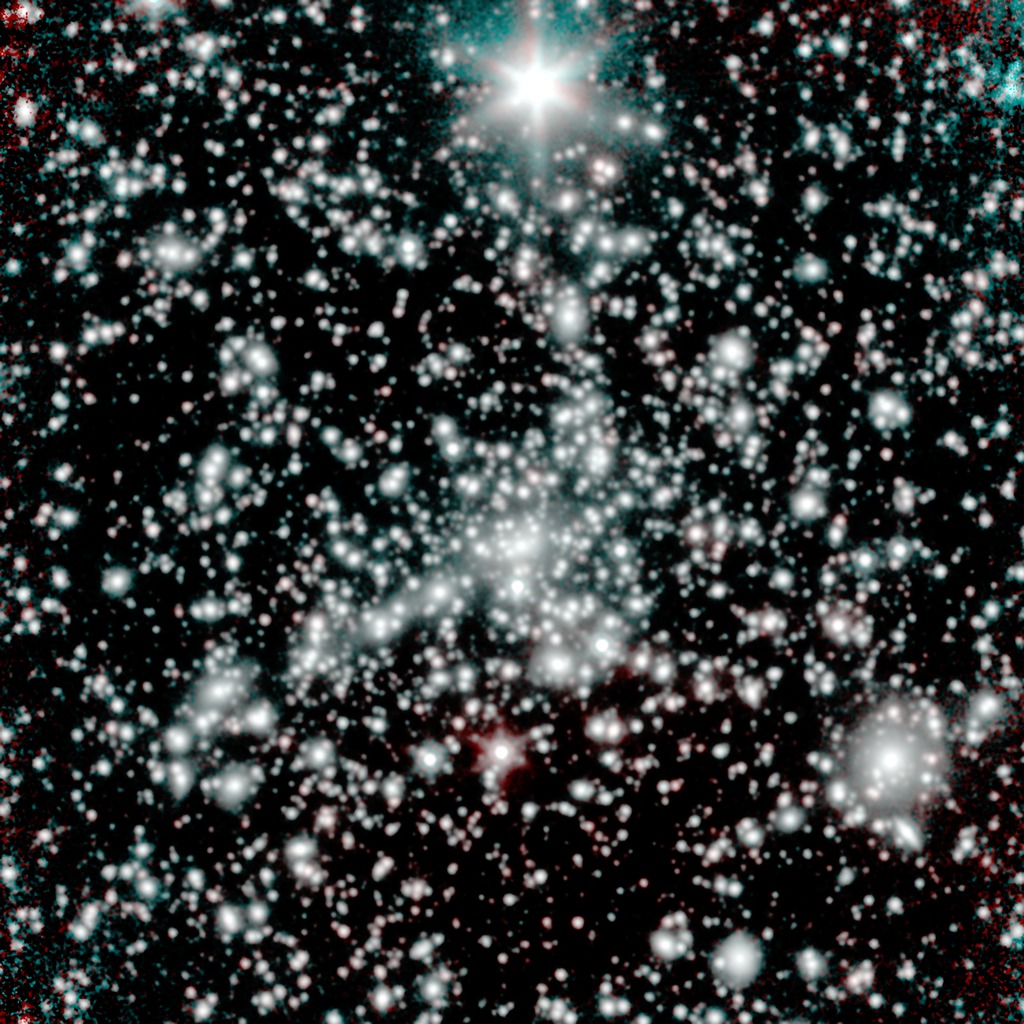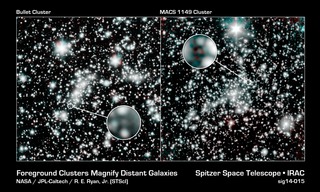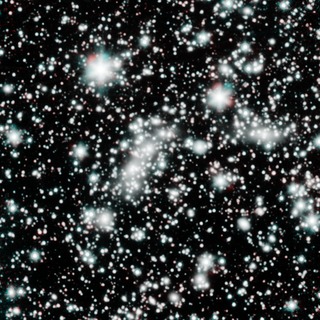
Observation • June 12th, 2014 • sig14-015b
sig14-015b
NASA's Spitzer Space Telescope captured this image of the galaxy cluster MACS 1149. The observations took place during the telescope's warm mission phase, following the depletion of its liquid coolant in 2009.
Spitzer, along with the Hubble Space Telescope, targeted MACS 1149 as part of the Spitzer UltRaFaint Survey, or SURFS UP. The joint project will image 10 massive, foreground galaxy clusters whose strong gravity magnifies the light of background objects. This so-called cosmic lensing causes objects such as the distant, dim, young galaxies that SURFS UP is investigating, to appear more than 10 times brighter than they normally would, allowing the team to study the stars within them.
At least one distant, young galaxy has been detected far behind the MACS 1149 but magnified by its gravitational lens effect. The overall reddish hue of starlight visible to Spitzer in this distant, young galaxy indicates that the stars in it are already mature. The findings therefore push back the time when the first stars and galaxies arose and began ending a cosmic period known as the Dark Ages.
These Spitzer observations at wavelengths of 3.5 and 4.6 microns are shown in blue and red, respectively.
About the Object
- Name
- MACS 1149
- Type
- Galaxy > Grouping > Cluster
- Cosmology > Phenomenon > Lensing
Color Mapping
| Band | Wavelength | Telescope |
| Infrared | 3.6 µm | Spitzer IRAC |
| Infrared | 4.5 µm | Spitzer IRAC |
Astrometrics
- Position ()
- RA =11h 49m 32.7s
- Dec = 22° 23' 58.3"
- Field of View
- 7.5 x 7.5 arcminutes
- Orientation
- North is 21.4° right of vertical






